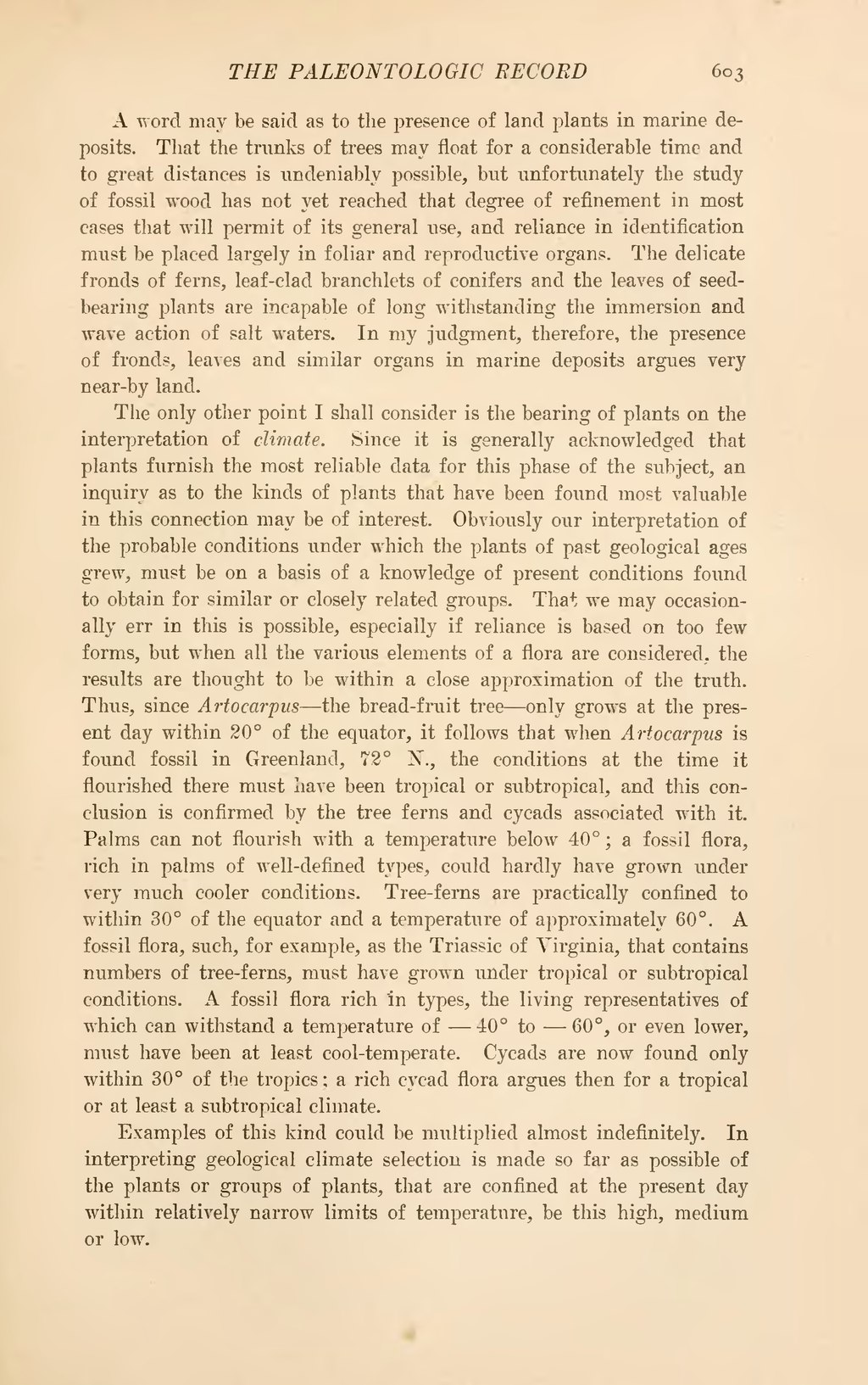A word may be said as to the presence of land plants in marine deposits. That the trunks of trees may float for a considerable time and to great distances is undeniably possible, but unfortunately the study of fossil wood has not yet reached that degree of refinement in most cases that will permit of its general use, and reliance in identification must be placed largely in foliar and reproductive organs. The delicate fronds of ferns, leaf-clad branchlets of conifers and the leaves of seed-bearing plants are incapable of long withstanding the immersion and wave action of salt waters. In my judgment, therefore, the presence of fronds, leaves and similar organs in marine deposits argues very near-by land.
The only other point I shall consider is the bearing of plants on the interpretation of climate. Since it is generally acknowledged that plants furnish the most reliable data for this phase of the subject, an inquiry as to the kinds of plants that have been found most valuable in this connection may be of interest. Obviously our interpretation of the probable conditions under which the plants of past geological ages grew, must be on a basis of a knowledge of present conditions found to obtain for similar or closely related groups. That we may occasionally err in this is possible, especially if reliance is based on too few forms, but when all the various elements of a flora are considered, the results are thought to be within a close approximation of the truth. Thus, since Artocarpus—the bread-fruit tree—only grows at the present day within 20° of the equator, it follows that when Artocarpus is found fossil in Greenland, 72° N., the conditions at the time it flourished there must have been tropical or subtropical, and this conclusion is confirmed by the tree ferns and cycads associated with it. Palms can not nourish with a temperature below 40°; a fossil flora, rich in palms of well-defined types, could hardly have grown under very much cooler conditions. Tree-ferns are practically confined to within 30° of the equator and a temperature of approximately 60°. A fossil flora, such, for example, as the Triassic of Virginia, that contains numbers of tree-ferns, must have grown under tropical or subtropical conditions. A fossil flora rich in types, the living representatives of which can withstand a temperature of —40° to —60°, or even lower, must have been at least cool-temperate. Cycads are now found only within 30° of the tropics; a rich cycad flora argues then for a tropical or at least a subtropical climate.
Examples of this kind could be multiplied almost indefinitely. In interpreting geological climate selection is made so far as possible of the plants or groups of plants, that are confined at the present day within relatively narrow limits of temperature, be this high, medium or low.

